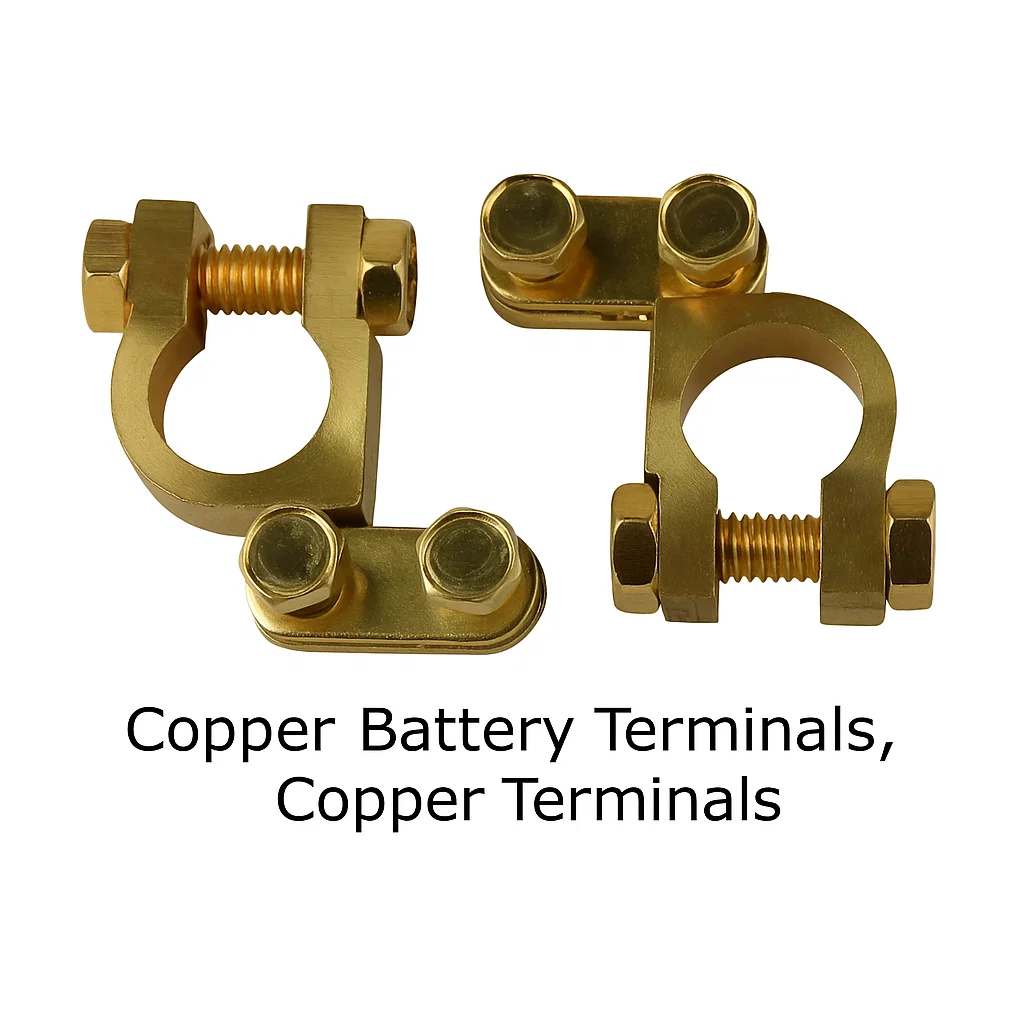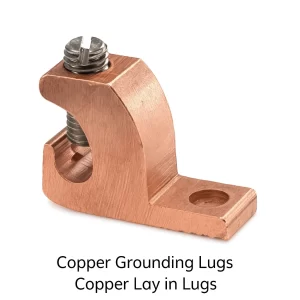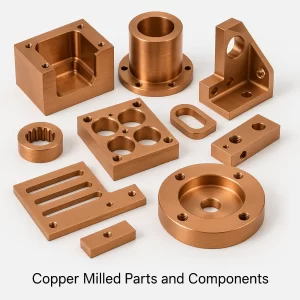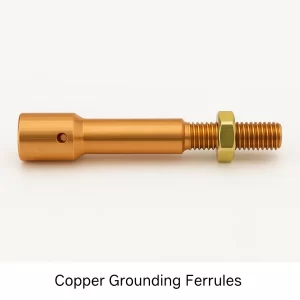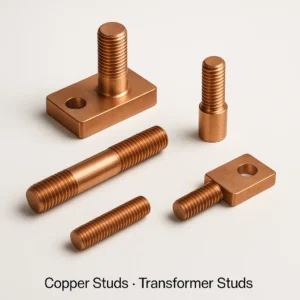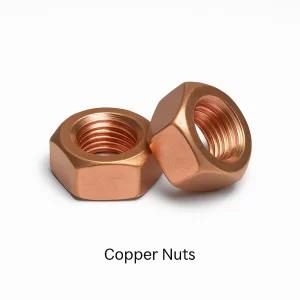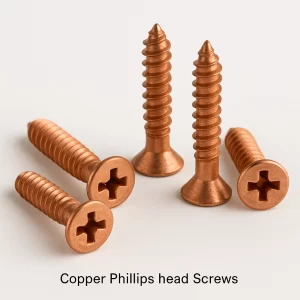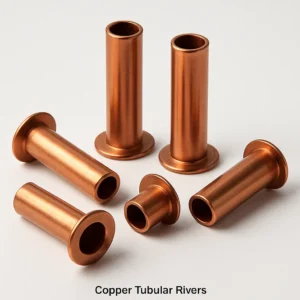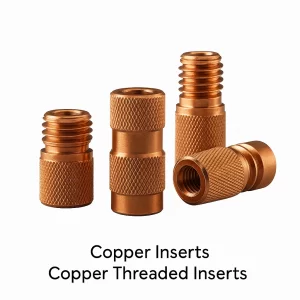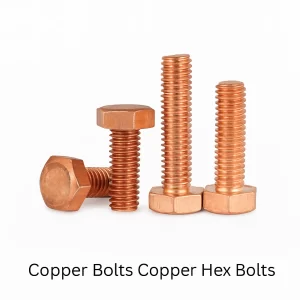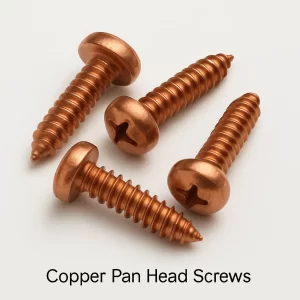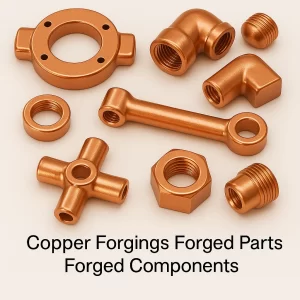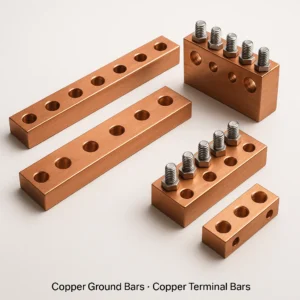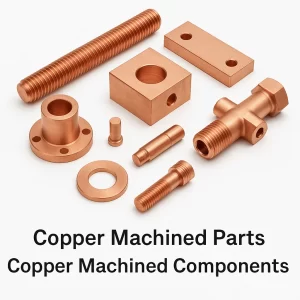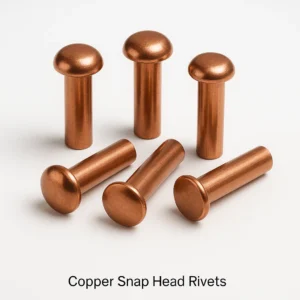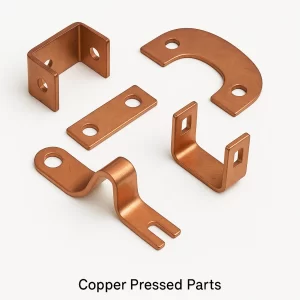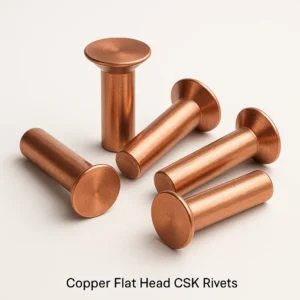Comprehensive Overview of Copper Battery Terminals and Copper Terminals
We are one of the leading manufacturers and exporters of Copper Battery Terminals and Copper Terminals from India. We have been supplying precision copper battery terminals, copper electrical terminals, and copper cable terminals to the world market for many decades. Our state-of-the-art manufacturing facility specializes in producing high-quality copper terminals using advanced forging technology, precision CNC machining, hot stamping processes, cold heading operations, and comprehensive surface treatment capabilities. With over three decades of global experience in copper terminal manufacturing, we serve diverse industries including automotive copper battery terminals, marine battery copper terminals, industrial battery copper terminals, renewable energy copper terminals, telecommunications copper terminals, railway copper terminals, heavy equipment battery terminals, UPS system copper terminals, and power distribution copper terminals. Our expertise encompasses working with various copper grades including pure Copper C11000 terminals offering excellent electrical conductivity, Copper C10200 oxygen-free terminals for high-performance applications, tin-plated copper terminals for enhanced corrosion resistance, nickel-plated copper terminals for automotive applications, and silver-plated copper terminals for premium electrical connections. We manufacture copper battery terminals ranging from small automotive battery terminals to large industrial battery terminals for heavy-duty applications, all maintaining superior electrical conductivity, mechanical strength, and corrosion resistance for reliable long-term performance.
Our advanced manufacturing capabilities in producing precision copper battery terminals extend across multiple manufacturing processes including hot forging for complex terminal shapes with superior grain structure, cold heading for high-volume terminal production with consistent quality, CNC machining for precision dimensional accuracy and thread cutting, stamping operations for flat copper terminals and connection lugs, drilling and tapping for mounting holes and threaded connections, and comprehensive surface treatment including tin plating, nickel plating, and silver plating. Our engineering team possesses deep technical knowledge of copper material properties, electrical conductivity requirements, contact resistance optimization, current carrying capacity calculations, and terminal design standards ensuring every copper battery terminal meets or exceeds customer specifications and industry standards. Our quality management system complies with ISO 9001:2015 standards, automotive quality standards including IATF 16949, international electrical standards including IEC specifications, SAE automotive standards, and customer-specific copper terminal requirements. We maintain complete traceability of copper raw material certificates, detailed manufacturing process documentation, electrical conductivity test records, and material test reports for every batch of copper battery terminals produced. Our customers across North America, European Union countries, United Kingdom, Australia, Middle East regions, and Southeast Asian markets trust our copper terminal expertise for their critical electrical connection applications.
Copper Battery Terminals – Automotive and Industrial Applications
Copper Battery Terminals represent specialized electrical connectors designed to establish secure mechanical and electrical connection between battery posts and electrical cables in automotive vehicles, industrial equipment, marine vessels, and stationary power systems. These copper battery terminals are manufactured from high-conductivity copper alloys providing low electrical resistance, high current carrying capacity, excellent mechanical strength for secure clamping, and superior corrosion resistance through appropriate surface treatments. Copper battery terminals find extensive applications in automotive starting lighting ignition systems, heavy-duty truck electrical systems, marine vessel battery banks, industrial forklift battery connections, golf cart battery terminals, recreational vehicle battery systems, backup power UPS battery terminals, solar energy storage battery connections, wind turbine battery systems, telecommunications backup battery terminals, railway locomotive battery connections, and mining equipment battery systems. The design of copper battery terminals requires consideration of contact surface area for low resistance connection, clamping mechanism for secure mechanical grip, cable connection provisions accommodating various wire sizes, material selection for conductivity and corrosion resistance, and surface treatment for environmental protection.
Our copper battery terminal manufacturing services include engineering support for terminal design optimization, material selection guidance based on application requirements, prototype development with electrical testing validation, high-volume production capabilities with consistent quality, surface treatment application including tin plating for general applications and nickel plating for automotive requirements, quality inspection including dimensional verification and electrical conductivity testing, and complete documentation with material certificates and test reports. We accommodate copper battery terminal sizes ranging from small motorcycle battery terminals to large industrial battery terminals for heavy equipment, with current carrying capacities from 50 amperes to over 1000 amperes depending on terminal design and copper cross-sectional area. Material specifications conform to ASTM B187 for copper bus bar wire and rod, ASTM B75 for seamless copper tube, ASTM B152 for copper sheet strip plate and rolled bar, and corresponding international standards including EN designations for European copper grades, JIS H3100 for Japanese copper specifications, and IS standards for Indian copper material requirements. Copper battery terminals typically maintain contact resistance below 0.5 milliohms for reliable electrical performance, with surface treatments providing corrosion protection in harsh environments including saltwater exposure, high humidity conditions, and temperature extremes. The lead time for copper battery terminal production typically ranges from four to six weeks depending on terminal design complexity, surface treatment requirements, order quantity, and testing specifications.
Copper Terminals – Electrical Connection Components
Copper Terminals represent the broader category of electrical connectors manufactured from copper or copper alloys designed to establish electrical connections between wires, cables, bus bars, and electrical equipment in power distribution systems, control panels, electrical enclosures, and electronic devices. These precision copper terminals are manufactured in various configurations including ring terminals with circular connection hole, spade terminals with fork-shaped connection, pin terminals for male connections, socket terminals for female connections, butt splice terminals for wire-to-wire joining, barrel terminals for crimping onto cable ends, and custom copper terminals per application-specific requirements. Copper terminals provide essential functions in electrical systems including establishing low-resistance electrical pathway, providing mechanical support for cable connections, enabling disconnection for maintenance, accommodating thermal expansion and vibration, and protecting connection points from environmental contamination. Common copper terminal applications include power distribution panel connections, motor terminal connections, transformer terminal blocks, switchgear copper terminals, circuit breaker connections, generator terminal connections, electrical enclosure terminal strips, control panel terminal blocks, and industrial machinery electrical connections.
The manufacturing process for precision copper terminals begins with copper raw material procurement including copper bar stock, copper strip material, or copper wire depending on terminal design, followed by forging operations for complex three-dimensional terminal shapes with controlled grain flow, stamping operations for flat terminals and connection lugs, CNC machining for precision dimensions and threading, drilling operations for mounting holes and cable entry, thread cutting or rolling for threaded connections, deburring to remove sharp edges, surface cleaning and preparation, plating operations including electroplating or hot dip tinning, quality inspection verifying dimensions and electrical properties, and packaging with protective measures preventing damage and corrosion. Our copper terminal capabilities include terminal sizes from small signal terminals for low current applications to large power distribution terminals accommodating cables up to 500 square millimeters, thread sizes from M3 to M20 for mounting provisions, plating thickness from 3 microns minimum to 20 microns for enhanced protection, and contact resistance specifications meeting international standards for reliable electrical performance. Standard copper terminals maintain electrical conductivity minimum 98% IACS for pure copper grades, with current carrying capacity calculated per conductor cross-sectional area and ambient temperature conditions following industry standards.
Copper Material Grades and Specifications
Copper Material Specifications and Standards for Terminals
| Copper Grade | International Designation | Key Properties | Typical Applications | Standards |
|---|---|---|---|---|
| Copper C11000 | CW004A (EN), C1100 (JIS), T2 (GB) | 99.9% pure copper, excellent conductivity, good formability | General battery terminals, electrical terminals, bus bars | ASTM B187, BS EN 1652, DIN EN 13601, JIS H3100, IS 191 |
| Copper C10200 | CW008A (EN), C1020 (JIS), TU2 (GB) | Oxygen-free copper, highest conductivity, premium applications | High-performance terminals, critical connections, audiophile | ASTM B170, BS EN 1652, DIN EN 13599, JIS H3100 |
| Copper C10100 | CW009A (EN), C1011 (JIS), TU1 (GB) | Oxygen-free electronic copper, ultra-high conductivity | Precision terminals, electronic applications, high-frequency | ASTM B152, BS EN 1652, JIS H3100 |
| Tin-Plated Copper | Various base grades | Copper with tin coating 3-20 microns, corrosion resistant | Marine battery terminals, automotive terminals, outdoor use | ASTM B545, IEC 60228, SAE J1127 |
| Nickel-Plated Copper | Various base grades | Copper with nickel coating 3-15 microns, wear resistant | Automotive battery terminals, industrial terminals, high temp | ASTM B689, DIN 41611, SAE J163 |
| Silver-Plated Copper | Various base grades | Copper with silver coating 2-10 microns, premium conductivity | High-performance terminals, audiophile, aerospace | ASTM B700, MIL-T-10727, AMS 2412 |
Copper Terminal Material Properties Comparison
| Property | C11000 Copper | C10200 Copper | Tin-Plated | Nickel-Plated | Silver-Plated |
|---|---|---|---|---|---|
| Electrical Conductivity (% IACS) | 100% | 101% | 98% | 95% | 105% |
| Tensile Strength (MPa) | 220-260 | 210-240 | 220-260 | 220-260 | 220-260 |
| Melting Point (°C) | 1083 | 1083 | 1083 | 1083 | 1083 |
| Thermal Conductivity (W/m·K) | 391 | 394 | 385 | 360 | 401 |
| Corrosion Resistance | Good | Good | Excellent | Excellent | Excellent |
| Cost Factor | Standard | High | Medium | Medium | Very High |
| Temperature Rating (°C) | 200 | 200 | 150 | 250 | 200 |
| Contact Resistance (mΩ) | <0.5 | <0.3 | <0.5 | <0.8 | <0.2 |
Manufacturing Processes and Technology
Our precision copper terminal manufacturing facility employs multiple manufacturing processes including hot forging using hydraulic presses up to 500 tons capacity for complex terminal shapes with controlled grain structure, cold heading machines for high-volume terminal production with excellent dimensional consistency, CNC turning and milling for precision machining of terminal features, progressive stamping dies for flat copper terminals with multiple forming stages, thread rolling machines for creating strong accurate threads, drilling and tapping operations for mounting holes, surface preparation including degreasing and pickling, electroplating facilities for tin plating, nickel plating, and silver plating, hot dip tinning for thick tin coating applications, and quality testing equipment including conductivity meters, coating thickness gauges, and dimensional inspection tools.
Manufacturing Process Flow: Copper raw material procurement and inspection → Forging or stamping operations → CNC machining if required → Drilling and threading → Deburring and edge finishing → Surface cleaning and preparation → Plating or coating application → Post-plating treatment → Quality inspection and testing → Packaging and labeling → Final shipment.
Surface Treatment Options: Tin Plating provides excellent solderability, good corrosion resistance, and cost-effective protection with coating thickness typically 3-15 microns meeting ASTM B545 specifications. Nickel Plating offers superior wear resistance, high-temperature stability up to 250°C, and excellent corrosion protection with coating thickness 3-12 microns conforming to ASTM B689 standards. Silver Plating delivers lowest contact resistance, highest conductivity, and premium performance with coating thickness 2-10 microns per ASTM B700 requirements. Hot Dip Tinning creates thick tin coating 10-50 microns for harsh marine environments. Electro-Tin Plating produces uniform coating with precise thickness control for consistent performance.
Battery Terminal Types and Configurations
Automotive Battery Terminals: Standard tapered post terminals fitting automotive battery posts with 17.5mm top post and 13mm side post configurations, universal battery terminals accommodating multiple battery types, top post battery terminals with bolt connection, side post battery terminals with threaded stud, military battery terminals meeting MIL specifications, and marine battery terminals with enhanced corrosion protection. Current capacity typically 300-800 amperes for automotive starting applications.
Industrial Battery Terminals: Heavy-duty battery terminals for forklift batteries with large conductor connections, traction battery terminals for electric vehicles, stationary battery terminals for UPS and telecom backup systems, large format battery terminals for energy storage, and custom industrial terminals per application requirements. Current capacity ranging from 500 amperes to over 2000 amperes for industrial applications.
Ring Terminals: Closed circular connection hole providing secure connection to threaded stud or bolt, available in sizes M3 to M20 hole diameter, insulated and non-insulated versions, standard and heavy-duty wire crimping barrels, and various tongue lengths for different applications. Current ratings from 10 amperes to 500 amperes depending on conductor size.
Spade Terminals: Fork-shaped connection enabling quick connect/disconnect without removing fastener, available in narrow, standard, and wide spade widths, insulated and non-insulated versions, locking and non-locking configurations, and various wire barrel sizes. Current ratings typically 10 amperes to 200 amperes.
Butt Splice Terminals: Joining two wire ends in straight-through connection, available in standard and heavy-duty versions, insulated heat-shrink types for environmental protection, parallel and inline configurations, and various conductor size accommodations.
Terminal Specifications and Current Ratings
Copper Battery Terminal Specifications
| Terminal Type | Conductor Size Range | Current Rating | Hole/Stud Size | Typical Dimensions | Application |
|---|---|---|---|---|---|
| Automotive Top Post | 6 AWG – 4/0 AWG | 300-800 A | 17.5mm post | 40-60mm length | Car, truck batteries |
| Automotive Side Post | 10 AWG – 2 AWG | 100-400 A | M6, M8 thread | 30-50mm length | Side terminal batteries |
| Marine Battery Terminal | 4 AWG – 4/0 AWG | 400-1000 A | 17.5mm post | 50-70mm length | Boat, marine applications |
| Industrial Battery Terminal | 2 AWG – 500 MCM | 500-2000 A | M10, M12, M16 | 60-120mm length | Forklift, industrial |
| Solar Battery Terminal | 6 AWG – 4/0 AWG | 200-800 A | M8, M10 stud | 40-80mm length | Solar energy storage |
Copper Electrical Terminal Specifications
| Terminal Type | Wire Size Range | Stud/Hole Size | Plating Options | Current Rating | Standards |
|---|---|---|---|---|---|
| Ring Terminal | 1.5mm² – 240mm² | M3 – M20 | Tin, Nickel, Silver | 10-500 A | IEC 60228, DIN 46234 |
| Spade Terminal | 0.5mm² – 16mm² | 3.2-6.3mm width | Tin, Nickel | 10-100 A | DIN 46244, JIS C2809 |
| Pin Terminal | 0.5mm² – 6mm² | 2-6mm pin | Tin, Gold | 5-50 A | DIN 46228 |
| Butt Splice | 0.5mm² – 95mm² | N/A | Tin, Nickel | 10-300 A | DIN 46230 |
| Barrel Terminal | 10mm² – 500mm² | M8 – M20 | Tin, Silver | 100-1000 A | IEC 60228 |
Quality Control and Testing
Electrical Performance Testing: Every batch of copper terminals undergoes electrical conductivity testing using four-point probe method verifying minimum 98% IACS conductivity for copper C11000 grade. Contact resistance testing measures resistance across terminal connection verifying values below 0.5 milliohms for reliable performance. Current carrying capacity validation tests terminals at rated current plus safety margin verifying temperature rise remains within acceptable limits per applicable standards. Voltage drop testing measures voltage loss across terminal connection under load conditions.
Mechanical Testing: Tensile strength testing verifies copper material meets minimum strength requirements per ASTM specifications. Crimping pull-out testing validates mechanical strength of crimped wire connections meeting minimum pull force requirements. Thread strength testing for threaded terminals verifies thread quality and holding capacity. Dimensional inspection using calipers, micrometers, and optical comparators confirms all critical dimensions within specified tolerances.
Plating Quality Testing: Coating thickness measurement using X-ray fluorescence or magnetic induction methods verifies plating thickness meets specifications typically 3-15 microns for electroplating. Adhesion testing validates plating bond strength to copper substrate. Salt spray testing per ASTM B117 evaluates corrosion resistance with test durations from 48 hours to 1000 hours depending on application. Visual inspection identifies any plating defects including pitting, peeling, or discoloration.
Documentation: Complete documentation package includes material certificates from copper supplier with chemical analysis, manufacturing process records, electrical test results including conductivity and contact resistance, mechanical test results, plating test reports, dimensional inspection records, and certificate of conformance.
Industries and Applications
Automotive Industry: Automotive battery terminals for starting lighting ignition systems, alternator terminals, starter motor connections, chassis ground terminals, battery cable terminals, battery disconnect terminals, and electrical distribution terminals. Applications span passenger cars, trucks, buses, motorcycles, and off-road vehicles.
Marine Industry: Marine battery terminals with enhanced corrosion resistance for saltwater environments, boat battery connections, yacht electrical systems, ship battery banks, marine engine starting terminals, navigation equipment terminals, and bilge pump connections. Tin or nickel plating provides protection against saltwater corrosion.
Industrial Equipment: Forklift battery terminals for material handling equipment, scissor lift battery connections, floor scrubber battery terminals, pallet jack electrical connections, industrial truck battery systems, warehouse equipment terminals, and mining equipment battery connections supporting heavy-duty operations.
Renewable Energy: Solar panel connection terminals for photovoltaic systems, solar battery bank terminals for energy storage, wind turbine battery connections, off-grid power system terminals, grid-tie inverter connections, charge controller terminals, and renewable energy distribution terminals.
Telecommunications: Telecommunications backup battery terminals for cell tower power, data center UPS battery connections, telecom shelter battery terminals, remote site power system connections, emergency backup power terminals, and critical infrastructure battery systems ensuring continuous operation.
Railway Applications: Locomotive battery terminals for diesel-electric engines, railway signaling system battery connections, track maintenance equipment terminals, passenger rail auxiliary power terminals, and railway station backup power connections.
Power Distribution: Electrical panel bus bar terminals, transformer connection terminals, switchgear copper terminals, circuit breaker connections, distribution board terminals, power station connections, and substation equipment terminals supporting electrical infrastructure.
Performance Specifications
Copper Terminal Performance Parameters
| Parameter | Standard Range | Heavy-Duty Range | Notes |
|---|---|---|---|
| Current Rating | 10 – 500 A | 500 – 2000 A | Based on conductor size |
| Contact Resistance | <0.5 mΩ | <0.3 mΩ | Lower is better |
| Electrical Conductivity | 98% IACS min | 100% IACS min | Pure copper grades |
| Operating Temperature | -40°C to +150°C | -40°C to +200°C | Material dependent |
| Voltage Rating | Up to 1000 V | Up to 1500 V | Insulation dependent |
| Plating Thickness | 3-15 microns | 10-25 microns | Application specific |
| Tensile Strength | 220-260 MPa | 260-320 MPa | Copper grade dependent |
| Vibration Resistance | Per SAE J1127 | Per MIL-STD-810 | Automotive/military |
Frequently Asked Questions
Q1: What is the difference between tin-plated and nickel-plated copper battery terminals?
Tin-plated copper battery terminals provide excellent solderability, good corrosion resistance, and cost-effective protection suitable for general automotive and marine applications with operating temperatures up to 150°C. Nickel-plated copper battery terminals offer superior wear resistance, higher temperature capability up to 250°C, enhanced corrosion protection in harsh environments, and are commonly specified for automotive under-hood applications where heat and vibration are concerns. Tin plating typically costs 20-30% less than nickel plating. Material selection depends on specific application requirements including operating temperature, environmental conditions, and budget constraints.
Q2: What current carrying capacity do your copper battery terminals support?
Our copper battery terminals support current ratings from 50 amperes for small motorcycle terminals to over 2000 amperes for large industrial battery terminals. Automotive battery terminals typically handle 300-800 amperes for starting applications. Marine battery terminals accommodate 400-1000 amperes. Industrial forklift battery terminals support 500-2000 amperes. Current carrying capacity depends on copper conductor cross-sectional area, terminal design, connection interface quality, and ambient temperature conditions. Our engineering team calculates appropriate terminal sizing based on maximum continuous current, starting surge current, voltage drop limitations, and temperature rise requirements per applicable electrical codes and standards.
Q3: Can copper battery terminals be used in marine saltwater environments?
Yes, copper battery terminals can be used in marine saltwater environments with appropriate surface treatment providing corrosion protection. We recommend tin-plated copper terminals with minimum 10-15 micron coating thickness for general marine applications, or nickel-plated copper terminals for enhanced protection in harsh saltwater conditions. Marine-grade copper alloys with improved corrosion resistance are also available. Regular maintenance including fresh water rinsing, application of corrosion inhibitor compounds, and periodic inspection extends terminal service life. Many marine vessels successfully operate copper battery terminals for years with proper selection and maintenance.
Q4: What is the typical lead time for custom copper terminal orders?
Standard lead time for custom copper terminal orders is four to six weeks from purchase order confirmation to shipment, accounting for engineering review if required for new designs, copper raw material procurement, forging or stamping operations, CNC machining if specified, surface treatment application including plating and curing, quality inspection and electrical testing, and packaging. For existing standard terminal designs with materials in stock, expedited delivery within 2-3 weeks may be possible depending on order quantity and surface treatment requirements. Large volume orders or complex custom terminal designs may require extended lead times which we communicate during quotation stage.
Q5: Do you provide material certificates and test reports with copper terminal shipments?
Yes, we provide comprehensive documentation with every copper terminal shipment including material certificates from copper supplier documenting chemical composition and conformance to applicable ASTM or international standards, electrical test reports showing conductivity measurements and contact resistance values, plating thickness test results with coating measurements, dimensional inspection reports for critical features, certificate of conformance stating compliance with purchase order specifications, and any customer-specific documentation requirements including PPAP for automotive customers or first article inspection reports for new part numbers. Complete traceability is maintained from copper raw material through finished terminal production.
Why Choose Our Copper Terminal Services
Three Decades of Terminal Manufacturing Excellence: With over 30 years of copper terminal manufacturing experience serving automotive, marine, industrial, and power distribution industries across global markets, we have developed deep expertise in copper terminal design, manufacturing processes, surface treatment applications, and quality assurance ensuring reliable electrical connections.
Comprehensive Manufacturing Capabilities: Our integrated manufacturing facility houses forging equipment, stamping presses, CNC machining centers, threading equipment, and complete plating facilities enabling vertical integration from copper raw material to finished plated terminals, reducing lead times, ensuring quality control, and providing competitive pricing.
Advanced Surface Treatment Options: Our in-house electroplating facilities provide tin plating, nickel plating, and silver plating capabilities with precise thickness control, uniform coating distribution, excellent adhesion, and complete testing validation, offering customers flexibility in surface treatment selection optimized for specific application requirements and environmental conditions.
Quality Assurance and Testing: Every batch of copper terminals undergoes comprehensive electrical conductivity testing, contact resistance measurement, plating thickness verification, dimensional inspection, and mechanical testing ensuring consistent quality and reliable performance, with complete documentation providing traceability and conformance verification.
Engineering Support Services: Our experienced engineering team provides terminal design consultation, material selection guidance based on application requirements, current carrying capacity calculations, voltage drop analysis, thermal performance evaluation, and prototype development with testing validation ensuring optimal terminal performance.
Competitive Manufacturing Advantage: Manufacturing in India provides significant cost advantages allowing us to offer copper terminal products typically 30-40% lower cost than North American or European manufacturers without compromising quality standards, material specifications, or performance characteristics, delivering excellent value proposition.
International Standards Compliance: Our copper terminals conform to international standards including ASTM copper material specifications, IEC electrical performance requirements, SAE automotive standards, DIN terminal specifications, and customer-specific requirements ensuring compatibility with global electrical systems and regulatory compliance.
Flexibility in Order Quantities: We accommodate both prototype quantities for new product development and high-volume production runs for established products, offering flexible minimum order quantities, scalable production capacity, and consistent quality across all order sizes.
Glossary of Technical Terms
Battery Terminal: Electrical connector designed to establish mechanical and electrical connection between battery post and electrical cable.
Contact Resistance: Electrical resistance at interface between two conducting surfaces, measured in milliohms, lower values indicating better electrical performance.
IACS (International Annealed Copper Standard): Standard reference for electrical conductivity where pure annealed copper equals 100% IACS at 20°C.
Electroplating: Process depositing thin metal coating onto copper substrate using electrochemical method with controlled thickness and uniform coverage.
Hot Dip Tinning: Process immersing copper terminal in molten tin creating thick protective coating typically 10-50 microns.
AWG (American Wire Gauge): Standardized wire gauge system where larger numbers indicate smaller wire diameters.
Crimping: Mechanical process compressing terminal barrel onto wire conductor creating gas-tight connection.
Ring Terminal: Electrical terminal with closed circular connection hole for secure attachment to threaded stud or bolt.
Spade Terminal: Fork-shaped electrical terminal enabling quick connect/disconnect without removing fastener.
Bus Bar: Thick copper conductor distributing electrical power to multiple branch circuits.
Voltage Drop: Reduction in electrical potential across conductor or terminal connection due to resistance.
Current Rating: Maximum continuous current terminal can safely carry without exceeding temperature limits.
Related Search Terms
Copper battery terminals manufacturer India, automotive copper terminals, marine battery copper terminals, industrial battery terminals, tin-plated copper terminals, nickel-plated copper terminals, precision copper terminals, copper cable terminals, copper ring terminals, copper spade terminals, battery terminal supplier, forklift battery terminals, solar battery terminals, UPS battery terminals, heavy-duty copper terminals, custom copper terminals, copper terminal blocks, electrical copper terminals, power distribution copper terminals, copper bus bar terminals, railway copper terminals, telecommunications copper terminals, copper crimp terminals, copper lug terminals, automotive battery clamps, marine terminal connectors, copper grounding terminals, high-current copper terminals, copper terminal plating, silver-plated copper terminals, copper terminal manufacturer, copper terminal exporter India, copper terminal specifications, battery terminal current rating, copper terminal standards, ASTM copper terminals, SAE battery terminals, IEC copper terminals, DIN copper terminals, copper terminal quality testing, certified copper terminal manufacturer, ISO certified copper terminals, copper terminal India supplier, competitive copper terminal pricing, reliable copper terminal manufacturer.
Call to Action – Contact Us Today
Ready to discuss your copper battery terminal and copper terminal requirements? Our experienced team is here to help you with precision copper terminals for your critical electrical connection applications.
Request a Quote: Send us your technical specifications, drawings, and quantity requirements to sales@jambrass.com for a detailed quotation within 24 hours.
Call Us Directly: Speak with our technical sales team at +91-22-43449300 / +91-22-43449323 during business hours (Monday-Saturday, 9:00 AM – 6:00 PM IST) to discuss your copper terminal requirements.
Visit Our Offices:
Office Address: 1406, 14th Floor, Dalamal Tower, Nariman Point, Mumbai – 400021, Maharashtra, India
Factory Address: Plot 10B, GIDC Industrial Estate, Shanker Tekari, Udyognagar, Jamnagar, Gujarat, India – 361004
Contact Person: Mr. Mehul Vora
We look forward to partnering with you for your copper battery terminal and copper terminal requirements and demonstrating why customers worldwide trust our precision terminal manufacturing expertise.

